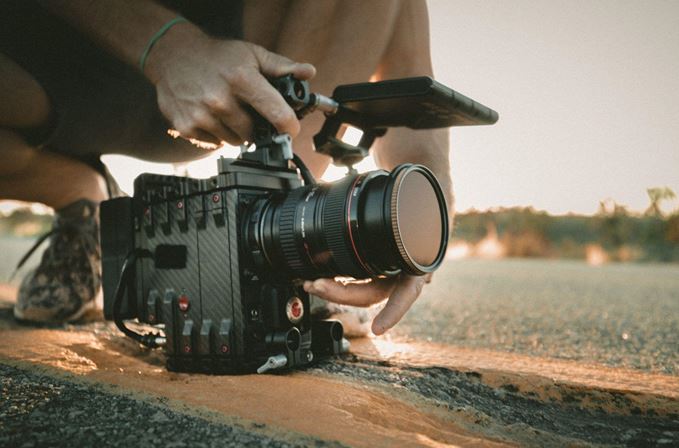Color grading is the act of adjusting and editing the colors on an image or video to achieve certain stylistic effects. In the past, color grading was reserved for serious industry experts. The average person barely even knew what it was, let alone how to do it.
Things couldn’t be more different today. With the power of modern technology, everyone can get involved with color grading and can use it to make their images and videos look more professional and more impressive. Let’s take a closer look at color grading and discuss how LUTs can be used for it.
LUTs for video – the background
Long gone are the days when video editing meant physically cutting up sections of film. Everything is digital these days, and there are numerous platforms and apps available that allow filmmakers and content creators to edit their videos.
As video editing technology continues to improve, we’re seeing new ways of working and more streamlined workflows that reduce the time required to complete mundane tasks and increase the creative possibilities. Everything from transitions to clip organization has been improved through technology, and of course, color grading has as well.
Perhaps the biggest improvement in color grading has been LUTs. LUTs, an abbreviation for look-up tables, are tools that can be used to save the details of particular color grading combinations.
But what exactly are LUTs for video?
The best way to understand what LUTs for video are is to think about them in practice. For example, if you find a combination that you really like and want to use again in the future, you could save the details as an LUT and be able to recall the settings later with the click of a button.
LUTs are particularly useful for professional editors, photographers, and filmmakers who often work to tight deadlines. Rather than having to painstakingly recreate each color grading, they can simply recall the relevant settings by selecting the corresponding LUT.
The best way to think about LUTs is as templates or presets. They can be used to significantly streamline processes and make post-production much more efficient.
Where to find LUTs
Professional editors and filmmakers will create their own custom LUTs. For example, when working on a movie, filmmakers will experiment and create a set of LUTs that will be used across the whole production. This makes every appear consistent and cohesive, even with footage shot in different lighting situations and across different cameras and file formats.
While you are perfectly entitled to make your own LUTs, there are also collections out there in LUT libraries and after effects templates that can be acquired to explore preset LUTs.
Why would you do this? Surely the point of color grading is to make something completely unique, doesn’t using pre-existing LUTs defeat the purpose?
The answer is that not everyone has the time or the experience to make their own LUTs. Colour grading is complex, and often considered something of a dark art. It takes years to master and is a highly disciplined practice that requires a lot of practice and study.
By using pre-made LUTs, you’ll be able to access color profiles created by experts with lots of experience, which can immediately transform your images and make them look more professional and eye-catching.
Flat versus Standard color profiles
When it comes to color grading, it can be helpful to understand the difference between flat and standard color profiles.
Many consumer and prosumer cameras will shoot in a standard default setting. Whether you are filming or photographing still images, the camera will add things like contrast, saturation, and sharpness. These additions make the final image look more complete, reducing the need for any editing afterwards.
However, some people, professional filmmakers in particular, want more creative control over their images. By shooting in standard, contrast and color are pre-added to the image, which means it can be extremely difficult to remove at a later date if necessary.
To avoid this, many filmmakers choose to shoot using what is known as a flat color profile. This can be achieved through manual adjustments of the camera’s settings, or by selecting a special mode usually called Log.
Images shot using a flat color profile can look a bit strange. They will seem desaturated, faded, or even milky. This is because no colouration or effects have been added, allowing the camera to capture the full dynamic range and retain details in the shadows and the highlights.
This gives editors a baseline image that they can then color and adjust in post-production. As the image has captured the full dynamic range and has no effects pre-applied, there is more scope for in-depth color grading and editing.
When shooting flat, it can be difficult to properly judge how a shoot will look in the final edit. For this reason, many filmmakers will have a second monitor on set that displays the shot with a LUT applied to give them an idea of what it might look like after post.
Conclusion
LUTs are an incredibly important part of the filmmaking and post-production process. They can be used to streamline color grading workflows and can help filmmakers shoot in flat color profiles more effectively.

